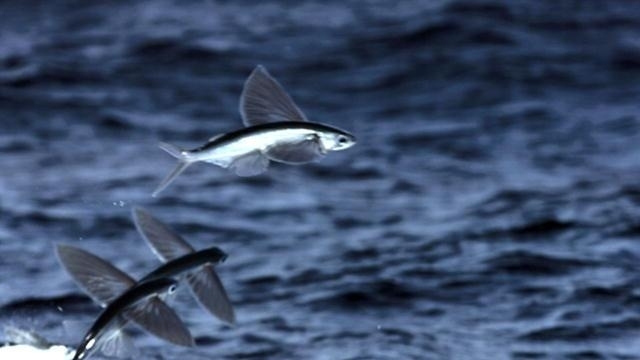


(1983) Fish Locomotion, Cambridge: Cambridge Univ. Biochemical and Biophysical Perspectives in Marine Biology, Vol. (1974) Biochemical aspects of fish swimming. (1988) Energetics of metabolism of flying fishes of the tropical Atlantic at various rates of swimming. (1967) Air and water vision of the Atlantic flying fish. (1980) At high speeds dolphins save energy by leaping. (1971) A re-examination of the functional morphology of the soft-rays in teleosts. migration between food-poor and food-rich areas) are at present supported by limited evidence.Īrita, G.S. An alternative hypothesis of energy conservation is rejected other possibilities (e.g. They probably developed from elongate epipelagic fishes with hypocercal tails that helped them to swim quickly in the near-surface high-drag zone.įlying fish probably fly mainly to escape from predators, particularly dolphin-fishes ( Coryphaena hippurus) and ommastrephid squid. The most recent cladistic analysis supports the view that flying fish evolved from half-beak-like ancestors. Evidence is presented to show that it is unlikely that flying fish are capable of flight at temperatures below 20 ☌ because of fundamental limitations of muscle function. Evidence is presented to indicate that smaller flying fish gain positive benefits to their swimming performance from possession of expanded lateral fins.įor a flying fish of 0.3 m standard length, significant reduction of drag by ground effect will take place at heights below about 0.5 m, prolonging flights and helping take-off.įlying fish are in general limited to surface waters warmer than 20–23 ☌.

The expanded, flat pelvic fins of four-wingers have evolved, not to increase wing area, but to function as ‘tailplanes’ or ‘stabilizers’ well behing the centre of gravity, with an area some 20–35% of the total lateral fin area, and an angle of incidence less than that of the cambered pectoral fins.įlying fish start to exhibit flight at a length of around 50 mm at smaller sizes surface tension is of importance, limiting flying fish to simple leaps with the fins held against the body by surface tension. Wingloading of flying fish is similar to that of birds and bats, and the largest of flying fish exhibit wingloadings similar to cormorants and pelicans. On the other hand, wingloading has a markedly positive allometric relationship with standard length because flying fish cannot increase relative wingspan during growth, but have to narrow the wings to improve performance as they fly at greater speeds. Alternatively, the noise may be due to a passive, flag-like function of the wings, stemming from their relatively rigid leading edges and flexible trailing edges.įlying fish grow in slightly (but significantly) negatively allometric fashion, becoming slimmer with increased body length.
#FLYING FISH FREE#
Both groups appear from external appearances to be red (aerobic) muscles.Ī general picture of the flight of an adult four-wing flying fish is presented: fish swim toward the surface at very high speed (< 30 body lengths s -1) with the lateral fins furled, leap through the water surface at a shallow angle, accelerate to take-off speed by taxiing with the lateral fins expanded and the tail beating in the water at up to 50 beats s -1, and enter a free flight that may be prolonged by further taxiing.įlying fish do not flap their wings to gain lift, but a whirring noise oroduced during take-off is possibly due to fluttering caused by the coupling together of the contraction of the axial muscles in the production of tail movements, and the action of the pectoral muscles in moving the pectoral fin rays. The pectoral fins are controlled by two groups of muscles, the lateral muscles that extend the wings, and the medial muscles that furl them. The pectoral girdle of flying fish is considerably enlarged by comparison with most teleosts, the coracoid and scapula being particularly hypertrophied. Cypsilurus, Hirundichthys) in which both pectoral and pelvic fins are hypertrophied. Fodiator, Exocoetus, Parexocoetus) in which the enlarged pectoral fins make up most of the lifting surfaces, and ‘four-wingers’ (e.g. The review is concerned mainly with exocoetid flying fish, because little reliable information is available concerning other groups.Īdult flying fish are of variable size (150–500 mm maximum length) and may be broadly divided into two categories: ‘two-wingers’ (e.g.


 0 kommentar(er)
0 kommentar(er)
